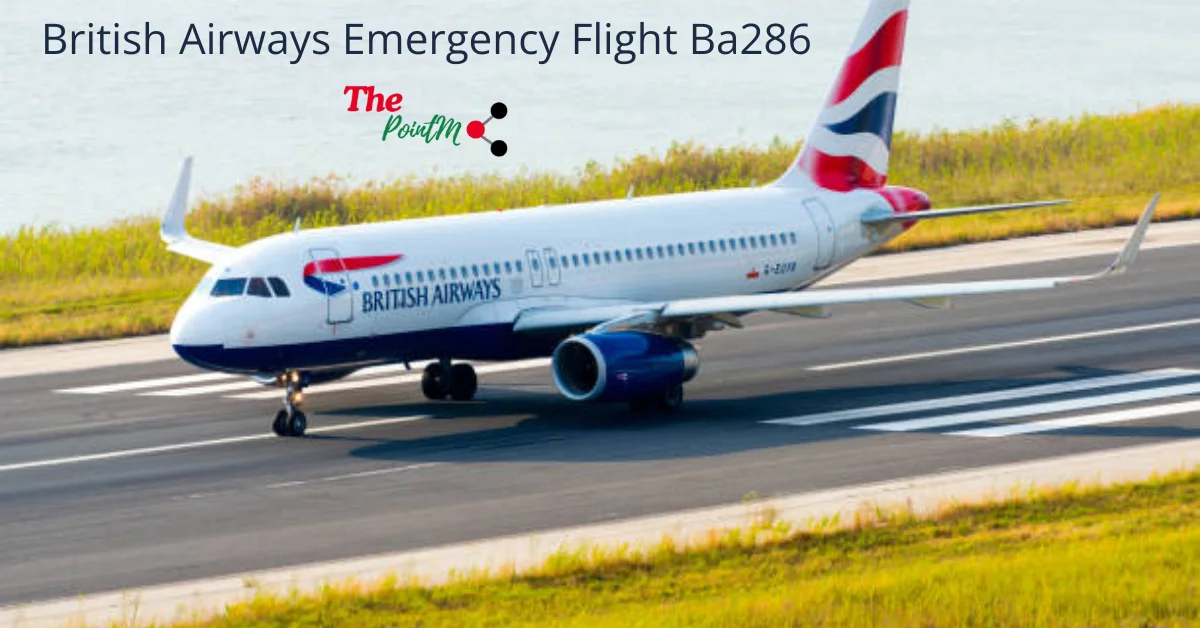Introduction to the British Airways Emergency Flight
On a seemingly ordinary day in the skies, British Airways flight BA286 found itself at the center of an alarming situation. As passengers settled into their seats for what they hoped would be another routine journey, unforeseen circumstances prompted the aircraft to declare an emergency. The cockpit’s communication crackled with urgency as pilots reported “7700,” a code that signifies distress. What unfolded next was a gripping display of professionalism and quick thinking amidst potential chaos. Let’s dive deeper into this startling incident involving British Airways’ emergency flight BA286 and explore its implications for all on board.
What Happened on BA286?
British Airways flight BA286 was en route from London to New York when it encountered an unexpected situation mid-flight. As the aircraft soared over the Atlantic, a sudden alert forced the pilots to declare an emergency.
They communicated with air traffic control, signaling for immediate assistance. The situation escalated as they activated code 7700, indicating a distress signal that sent alarms ringing through aviation channels.
Passengers onboard felt the tension rise in the cabin. Crew members quickly assured everyone while preparing for possible emergency protocols.
The plane then altered its course back towards London Heathrow Airport, guided closely by air traffic controllers who coordinated landing priorities and safety measures.
Amidst this chaos, communication remained key as updates flowed between crew and passengers alike during those tense moments in the sky.
The Impact on Passengers and Crew
The impact on passengers aboard British Airways emergency flight BA286 was significant. Anxiety filled the cabin as the crew announced the emergency declaration. Many travelers held their breath, grappling with uncertainty.
The atmosphere shifted from routine to tense in moments. Passengers exchanged worried glances and whispered questions about what might happen next. The flight attendants remained calm, providing reassurance while preparing for landing procedures.
For the crew, it was a test of training and composure. They focused on ensuring passenger safety above all else. Their professionalism shone through amidst potential chaos.
After safely landing, emotions ran high among both passengers and staff. Relief mixed with lingering fear as everyone disembarked. This experience will likely linger in their memories long after they’ve returned to normal life.
Response from British Airways and Air Traffic Control
British Airways responded swiftly to the emergency situation aboard flight BA286. The airline’s crisis management team was activated immediately, ensuring that communication lines remained open with both passengers and crew.
Air Traffic Control played a crucial role in managing the unfolding incident. As soon as the emergency code 7700 was declared, they prioritized BA286’s safe return to London Heathrow. Coordination between British Airways and Air Traffic Control ensured a smooth approach for landing.
The quick actions of air traffic controllers were instrumental in guiding the aircraft back safely. They provided vital updates regarding weather conditions and runway availability, helping pilots navigate through potential challenges during their descent.
Meanwhile, British Airways kept families informed about developments concerning their loved ones onboard. Transparency during such incidents is vital for maintaining trust and calm among anxious relatives waiting on the ground.
Similar Incidents Involving Emergency Code 7700
Emergency code 7700 is universally recognized in aviation as a signal for distress. It has been deployed in various situations, illustrating the unpredictability of flying.
One notable incident occurred with an American Airlines flight that encountered severe turbulence. The crew promptly declared an emergency to prioritize passenger safety and coordinate immediate assistance upon landing.
Another case involved a Delta Airlines aircraft experiencing engine failure shortly after takeoff. The pilots used code 7700 to alert air traffic control, ensuring they received expedited clearance back to the airport.
Even smaller carriers have faced emergencies where this distress signal was essential. In each instance, it demonstrated how critical communication is in safeguarding lives during unexpected events.
These incidents reinforce the importance of training and preparedness among airline crews when confronting unanticipated challenges mid-flight.
Possible Reasons for the Emergency Declaration
Emergency declarations can arise from various situations. Mechanical failures are often a primary concern. A sudden malfunction could compromise aircraft systems, necessitating immediate action.
Another possibility is medical emergencies among passengers or crew members. These incidents require quick decisions to ensure safety and provide the necessary care.
Weather conditions play a critical role as well. If severe turbulence or storms develop unexpectedly, pilots may opt for an emergency landing.
Security threats cannot be overlooked either. In rare cases, suspicious activity on board might trigger the need for swift intervention by air traffic control and ground personnel.
Fuel issues can lead to serious concerns mid-flight. An unexpected drop in fuel levels may prompt pilots to declare an emergency to address potential risks efficiently and safely. Each situation demands careful consideration of options available during high-pressure moments.
Conclusion and Importance of Airline Safety Measures
Airline safety remains a top priority in the aviation industry. The recent incident involving British Airways Flight BA286 serves as a reminder of the unexpected challenges that can arise mid-flight. Emergency code 7700 is used globally to signal any serious issues requiring immediate attention.
Passengers and crew must be prepared for such scenarios, demonstrating resilience in stressful situations. The swift response from both British Airways and air traffic control highlights the importance of effective communication during emergencies.
As technology advances, airlines are continually improving safety protocols and training procedures. Incidents like BA286 stress the need for ongoing vigilance and preparedness among all aviation personnel.
The commitment to passenger safety will ultimately ensure that flying remains one of the safest modes of transport available today. Continuous improvements in airline operations are crucial to maintaining high standards within this ever-evolving industry.

